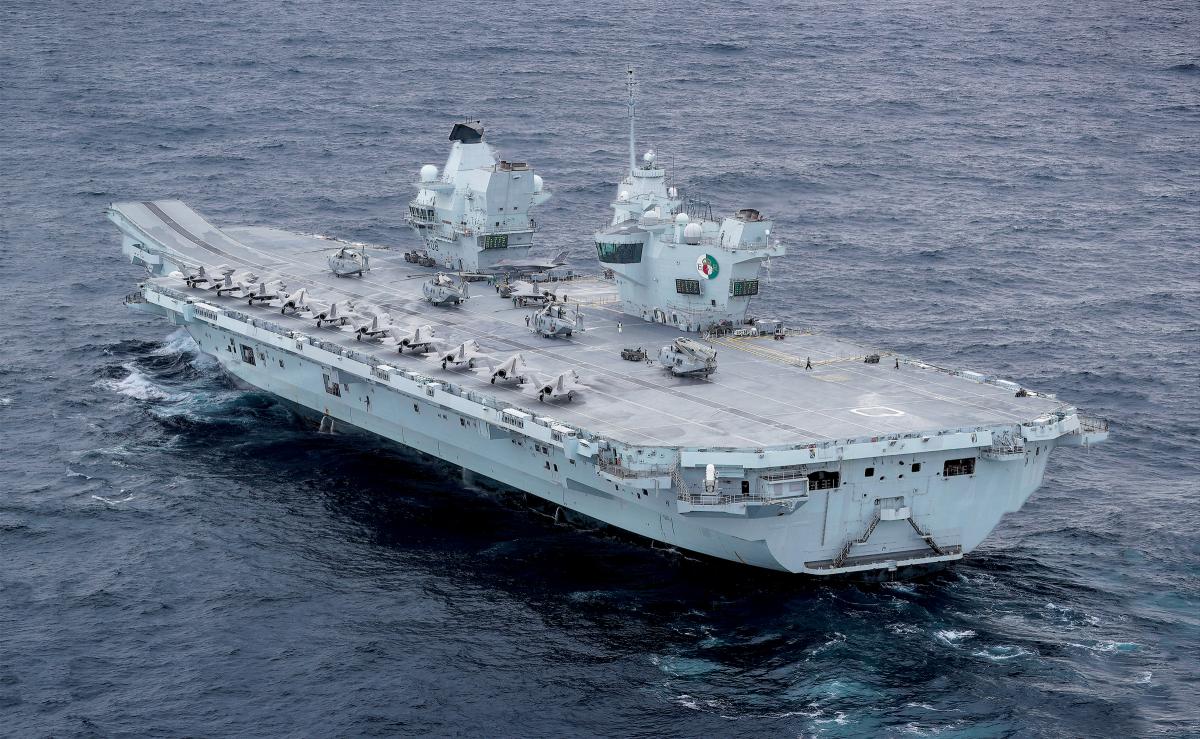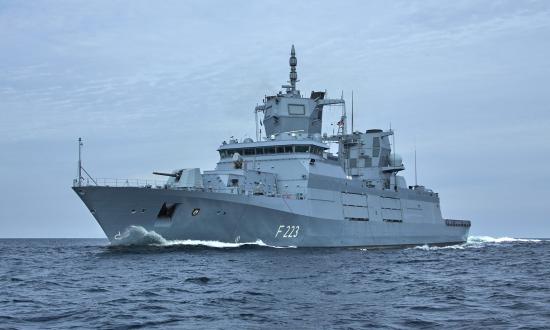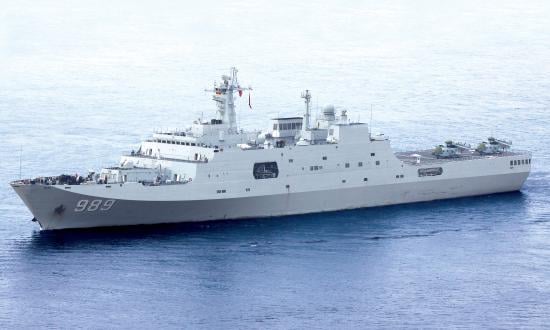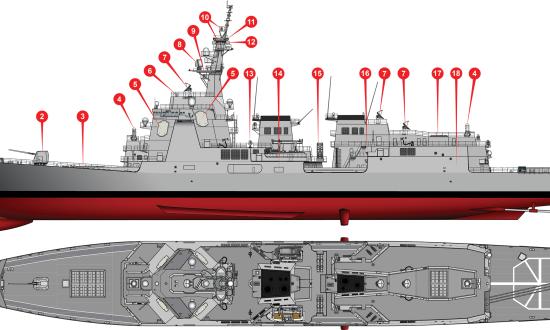The United Kingdom’s 65,000-ton aircraft carriers, HMS Queen Elizabeth and Prince of Wales, are the largest warships ever built for the Royal Navy. Based at Portsmouth, England, the first new full-size British carriers in decades measure 920 feet long at the flight deck and 230 feet across the beam. Two 70-ton aircraft elevators are fitted starboard to move aircraft between the flight deck and a 508-foot by 110-foot hangar. The vessels have a twin-island design so that ship operations can be managed from the forward structure, while flight operations are conducted from the aft island, which offers increased visibility.
Designed to serve as fleet flagships, the Queen Elizabeth and Prince of Wales can embark 36 strike fighters and 4 naval helicopters, though each could surge to more than 50 total aircraft. Rather than catapults and arresting gear, the class is fitted with a “ski jump” ramp at the bow to facilitate rolling launch of stealthy F-35B Lightning II short take-off/vertical landing strike fighters.
The carriers can embark a wide variety of rotary-wing aircraft, including CH-47 Chinook transport helicopters, AH-64E Apache gunships, and Merlin Mk 2 antisubmarine warfare and Mk 3/4 Commando transport helicopters. A high-power radar pod known as Crowsnest is under development for the Merlin Mk 2, so that in the near future the helicopters will be able to perform the airborne surveillance and control (ASaC) mission for the carrier and her escorts.
The Queen Elizabeth class is powered by an integrated electric drive with two gas turbines and four diesel engines, enabling a top speed above 25 knots and a range of 10,000 nautical miles while cruising at 15 knots. The carriers have three 20-mm Mk 15 Phalanx Block 1B close-in weapon systems for point defense and four remotely operated 30-mm DS30M guns to protect against asymmetric threats. Full complement for each ship is a little more than 1,600 personnel—about 690 ship’s crew and 920 associated with the air wing. These carriers have secondary roles as amphibious assault ships and could also carry hundreds of Royal Marines or soldiers in addition to the regular crew.
The Queen Elizabeth was commissioned on 7 December 2017, while the Prince of Wales entered the fleet two years later, on 10 December 2019.
From the outset, the new British carrier effort has included enhanced integration and interoperability planning with U.S. Navy and Marine Corps assets. This past fall, Marine Corps F-35Bs and their crews trained extensively alongside their British counterparts on board the Queen Elizabeth.
The carrier’s first operational deployment is scheduled for 2021, during which British and U.S. F-35B strike fighters will be embarked together and operated interchangeably from the British warship.






